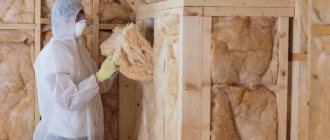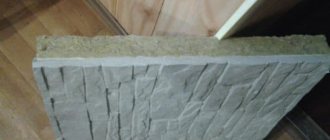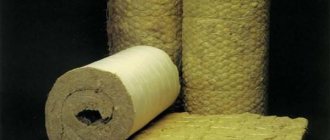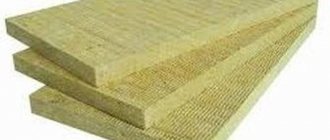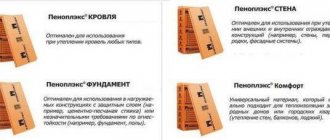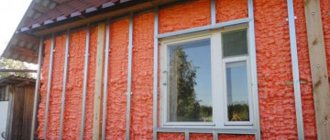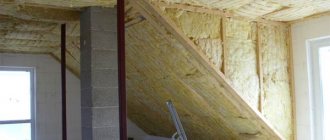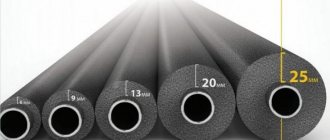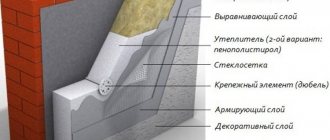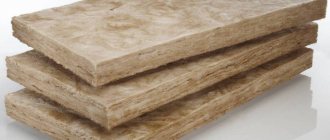Glass wool is an insulating material made from glass fibers using a binder into a texture similar to wool or wadding. This material traps air between the glass fibers and, as a result, such air pockets lead to high thermal insulation properties.
As insulation, it is produced in rolls or slabs with different thermal and mechanical properties. Glass wool can be made into a substance that can be sprayed or applied to any surface, allowing it to seal cracks.
Natural sand or recycled glass is mixed and heated to 1450 °C to produce glass mass. Fiberglass is made using the following method: under the influence of centrifugal force, in a spinning drum, the glass mass passes through a fine mesh, cooling and solidifying upon contact with air. Mechanical strength is achieved through the adhesive properties of each individual fiber and the addition of special binding elements. The resulting woolen fabric is cut and packed into rolls or panels, palletized and stored in a warehouse until sold.
Mineral wool or fiberglass?
Thermal insulation made of glass wool is a very common element of thermal insulation of buildings and premises. Its widespread use is primarily due to its low price and high thermal characteristics.
Fiberglass insulation does not allow water and steam to pass through, is quite tensile, and is easy to install and cut. The main disadvantage of this material is its harmful characteristics: the fiber has very small particles that cause irritation to the skin and respiratory system. Photos of glass wool are presented below.
Mineral wool is safer for health, lightweight, compresses well, is denser and has high thermal insulation properties. Its main disadvantage is its high cost.
Reviews about mineral wool
Andrey, 35 years old, Murmansk: “I tried a lot of insulation materials in my work. For insulation of bathhouses and houses made of timber, I give preference to stone mineral wool, since it is easier to work with and has a longer service life.” Igor, 45 years old, Sevastopol: “I consider stone mineral wool to be the best insulation at an affordable price. However, if the customer has enough money, I recommend using ecowool - a completely natural insulation material that has a longer service life.”
Benefits and safety
Main characteristics of glass wool:
- long fibers;
- product density ranges from 11 to 45 kg/m3;
- high resistance to mechanical loads (depending on density);
- thermal conductivity of glass wool ranges from 0.032 to 0.044 W;
- high sound insulation properties;
- non-flammable material, non-flammable class A1;
- maximum operating temperature 230 °C;
- fire resistance;
- melting point 700-1000 °C;
- high elasticity of the material;
- high tensile strength;
- resistance to mechanical damage during transportation.
Many people often ask the question: does glass wool burn? Due to its structure and very high melting point (over 1000 C°), glass wool does not burn and is an ideal fire protection.
In addition to its main advantages, the properties of glass wool allow it to be used as a fire-resistant material to protect the structure from destruction in the event of a fire, as well as to ensure the safe evacuation of people from the building. The high density of non-flammable glass wool does not allow flames to develop (the highest non-flammability class is A1), stops the spread of fire, and does not emit toxic gases when exposed to high temperatures.
This excellent property of a non-combustible material is widely used in various industries; cotton wool is used as insulation and insulating material for walls, pipelines, containers and various structures. Therefore, to the question: does glass wool burn or not, the answer is obvious.
Like any building thermal insulation material, glass wool has pros and cons. Let's briefly analyze the positive and negative aspects.
What is the difference between glass wool and mineral wool?
In order to correctly determine what is better suited for insulating a living space - glass wool or mineral wool, you must first become familiar with the properties of these materials.
Mineral wool is the general name for a group of all inorganic insulation materials with a fibrous structure, which are made from rocks, slag and glass. The insulation “fixes” the air layer, using it to effectively insulate the room from the cold. Mineral insulation consists of millions of fibers that are intertwined in the right order.
Based on the composition of the fibers, mineral insulation is divided into groups: glass wool, slag wool and stone wool. Stone wool is often abbreviated as “mineral wool”.
Phenolic or urea compounds are used as a binding component for insulation. Phenolic components give the material water-repellent properties, but they are also toxic. This mineral insulation can be used exclusively for outdoor work.
Mineral insulation is a specific material. Only with professional installation using blow-moulding machines can you achieve cost-effective insulation without wasting material. Equipment for installing mineral wool is located at some distance from the site. Two people can completely insulate a new-building cottage in 2 days.
Stone mineral wool has another positive difference from other insulation materials; it does not shrink the material throughout its entire service life. Due to the fact that its installation is carried out with the required density, it is in a compressed state in building structures and, accordingly, has good contact with the walls.
Is glass wool harmful to health?
Glass wool is harmful to health: it irritates the eyes, skin and respiratory system. Potential symptoms include irritation of the eyes, skin, nose, throat, shortness of breath, difficulty breathing, sore throat, hoarseness and cough.
The harm of glass wool to humans is confirmed by scientific and medical research.
Fiberglass is safe to manufacture, use and transport only if special precautions are taken to protect against temporary mechanical irritation from small particles. Unfortunately, these working methods are not always followed: fiberglass is often left uninsulated on pipes in basements, after which it becomes simply impossible to work in such rooms.
Simple precautions
The health hazards of glass wool are not fatal during short-term work with the material, but can be critical for the respiratory system during prolonged inhalation of glass dust. It is necessary to understand that the harm of glass wool to humans can lead to irreparable consequences and chronic diseases.
When installing insulation, use the simplest methods of protection against glass wool. Wear gloves or clothing that prevent fiberglass from coming into contact with your skin. Do not rub or scratch the skin if you see fibers on its surface. Do not touch your eyes or face when working with fiberglass; wear safety glasses or a mask or respirator to avoid getting tiny particles into your eyes and lungs.
Pants and long-sleeved shirts are the best and easiest option for protecting your skin. This will significantly reduce the chances of irritating elements coming into contact with your skin.
When working with glass wool, special clothing is also necessary to prevent splinters of cotton wool from penetrating deep into the skin when an already affected area of skin comes into contact with any surface. Rubbing the scratches will only cause the fiberglass fibers to sink deeper into the skin, where they will break into fragments. If you notice dust on your skin, do not scratch it, just wash it off with plenty of cool water.
After you finish working with fiberglass, wash your hands well and immediately remove your clothes to wash. Pre-clean your clothes with a damp brush if they have been exposed to dust for a long time.
If fiber gets into your eyes, rinse them with cool water for at least 15 minutes, then consult a doctor to have them examined with appropriate equipment. Do not rub your eyes under any circumstances!
[edit] Participants of "Glass wool" today
Kuznetsov and his protégé Denis Belikin after swimming
Due to the fact that the “New Year” video hit the Internet about 5 years after filming (before that it was shown only once on Orenburg Regional TV), the group members simply managed to grow up during this time.
Denis Belikin
- despite his close acquaintance with the pedophile (?) Sergei Kuznetsov, he still managed to maintain his heterosexual orientation. In 2005, he moved to Moscow and married a girl, Irina (a fan of the group, 8 years older than him). They had a daughter. Currently works as a bricklayer in a Moscow construction company. Even while living in Orenburg, he had problems with the police due to street robberies and the theft of several boxes of beer and nuts from a summer cafe. He even spent time in a pre-trial detention center (but Kuznetsov got rid of it). This fact greatly affected his further work - the third (and God forbid, the last) album of “Glass Wool”, entitled “Special School”, consists entirely of criminal lyrics.
Arthur Eremeev
— also moved to Moscow, where he was repeatedly spotted in various gay parties. He took up a “solo career”, which consisted of re-singing old Glass wool songs to the same old soundtrack with backup dancers from the gangways in various cheap gay night clubs on the outskirts of Default-city. Pruflink. Lately, I’ve plunged headlong into marketing, selling off my closeness to the characters of Russian trash culture. In order to break with the past, he appears in the Luhari party under the pseudonym Archi Ti, and actively takes selfies on Instagram.
Sergey Dyadyun and Alexander Gulyaev
— at one time they tried to promote their own project “Ink Sky”, which actively toured rural houses of culture in the Orenburg region. Alas, they failed to win the people’s love, and then their traces in history are lost.
Sergey Kuznetsov
— marked by several more major scandals.
In particular, he entered his new “project” into the “Interdeti.ru” competition in the form of a soloist with the pseudonym Alis (the soundtrack was recorded by a 45-year-old female vocalist, “his mouth was opened” by a 13-year-old cute homeless boy from Minsk named Lesha - without hearing and voice). The adventure was so dark that Kuznetsov asked his then producer Yaroslav Nikitin to become the “guarantor” of his protégé at the competition. Anonymous people in the comments exposed the “sex substitution”, which provoked a non-illusory fight, but, thanks to rich pedophile fans (the competition had the opportunity to vote either by paid SMS or buy points for WebMoney), Alis even managed to take 3rd place. However, the false Alis did not come to the presentation of the prize (according to the conditions, he would have to sing live there). Photo from the producer's website - a new victim of a maniac
Currently, Sergei Kuznetsov continues to periodically troll fans with his pedophile revelations in his own guest room, which usually happens in a slightly altered stream of consciousness. According to people who personally know the “genius,” the great composer has suffered from alcoholism since adolescence, and after the army he also developed drug addiction (tranquilizers like reladorm, phenazepam, diazepam, diazepex, taken by Kuznetsov mixed with vodka and in huge doses). Usually, having come to his senses for a short time, Kuznetsov removes from the guest book his own passages about “a cruel world that does not understand emerald love,” of which, I must say, there is a lot there. Just look at the statement about the group “Angel and the Cat”.
| There are three participants in the project: Angel - “Local earthquake” on an apartment scale. Cat - Recklessly cheerful and affectionate, with a mischievous cunning look. And - a modest, quiet guy with good musical abilities. “Angel And Cat”... At first glance, it’s the complete opposite. That is how it is! - They are different. And together, oddly enough, the boys completely complement that very “Universal Harmony”. Exactly what is missing in this Space! |
As you can see, the essay is full of love and adoration. In addition, at least 10 photos of bare-chested boys periodically appear on the website in the “photo” section. Why "periodically"? Perhaps this is facilitated by the existence of criminal liability for pedophilia in Russia. If you catch the right moment, you can extract tons of lulz.
Kuznetsov’s “creativity” (in rare periods of sobriety) still consists of writing simple songs a la the rural House of Culture in 1988, which are of no interest to anyone except fifty female fans. Only boy soloists change as they lose sexual attractiveness due to growing up (Kuznetsov prefers ages from 9 to 15 years). Kuzya also writes stories. Lately he’s been lying in a doze and listening to the radio, as can be seen from the post of his fellow countryman and simply a sincere person.
Oleg Andreev
- still works for Kuznetsov as a sound engineer, thank you - see the last photo in the list. Well, there are affordable teenage boys there too.
Installation work
Glass wool insulation of various surfaces is carried out according to the same principle, but additional fasteners will be required on the walls and ceiling, because It will not be possible to glue the slab to a steep surface due to its high softness.
Before cutting glass wool, measure the exact number of slabs of the required size. The size of each slab may be different, but not by much; an overlap of only a few centimeters is allowed, which can later be easily bent when compacting the insulation sheet into the required niche.
The cutting process itself is quite simple. If the thickness of the sheet is insignificant, then it can be cut with large (industrial) scissors. If it is necessary to cut several sheets at the same time, use a hand saw with fine teeth.
It will be warm and comfortable!
Fiberglass insulation is widely used in almost all construction and industrial applications as an insulating material due to its thermal and acoustic properties, tensile strength, low cost, ease of installation, low weight and exceptional resilience. Despite the harm to human health, such cheap material will be in use for a very long time. The main thing is to comply with the minimum safety requirements when laying and cutting fiber. Glass wool is the best option for external thermal insulation; it will provide high-quality insulation and comfortable living in a house or apartment without significant material investments.
